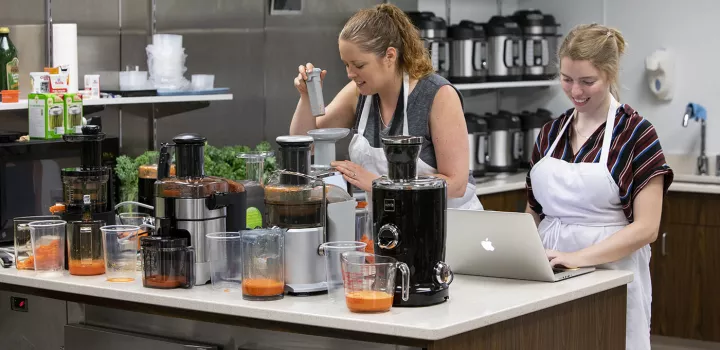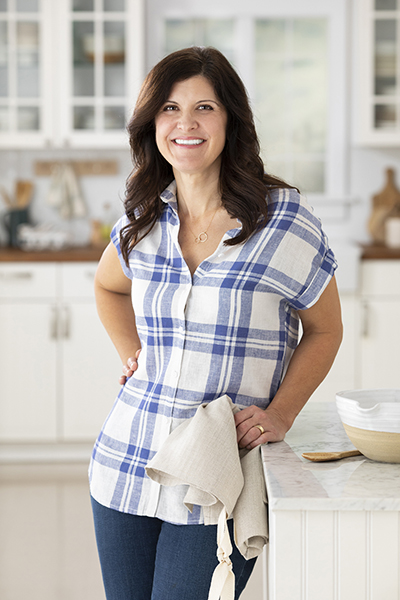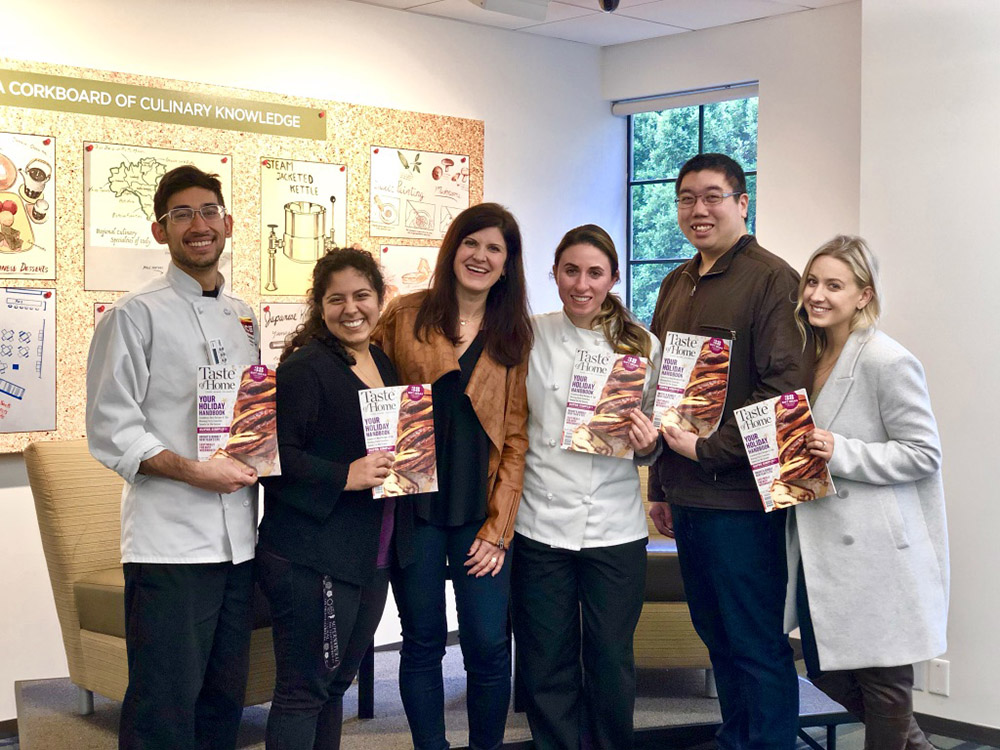
Behind the Scenes of Editorial Recipe Testing
Taste of Home magazine's executive culinary director shares her food media career story.
One of the many draws of a culinary career is the endless options of paths available. Chefs who start off on the line may one day find themselves working in research and development at a meal kit concept, as a food stylist behind the scenes of a morning show or even in education. Graduates in food media often pursue a food magazine test kitchen, where they can combine R&D, editorial and cooking.
The Institute of Culinary Education's Los Angeles campus hosted Sarah Farmer, Taste of Home’s executive culinary director who has been with the cooking magazine for 15 years, for a guest lecture discussing what it’s like to work in a test kitchen.
 How did you get into the industry?
How did you get into the industry?
I stepped into the deliciously exciting world of food styling, print and film production in 1995 as a summer intern at McDonald’s Corporate Headquarters in Oak Brook, Illinois. I began working with freelance food stylists, advertising agencies and production companies as an assistant technical advisor. My job was to ensure that all our creative work such as still food photography and any other media featuring McDonald’s products, packaging, people or stores, was technically accurate according to corporate specifications. For example, the shreds of lettuce on a Big Mac had to be 3/8 of an inch in length and the curl on our soft serve ice cream could not curl too far back, as that would mimic Dairy Queen’s trademark “curl.”
In 2004, I started my career as a food stylist at Taste of Home (TOH). For the past 15 years, I have been styling food, testing recipes and leading the brand’s test kitchen team of skilled culinary professionals which includes food stylists, culinary producers, recipe testers, recipe editors and culinary assistants.
What skills are needed to thrive in a test kitchen like Taste of Home’s?
It all starts with having a solid foundation of culinary (including pastry) techniques. Taste of Home tests all kinds of recipes submitted from home cooks, many of which are baked goods like yeast breads, pastries (such as pie and choux pastry, featured in recipes like cream puffs, cheddar gougeres and browned butter apple pie with cheddar crust), candies and various other desserts. A huge part of the recipe testing process is documentation, so attention to detail is imperative and as at almost every other professional workplace, an aptitude for solving problems is a powerful skill along with the discipline to think objectively. The best test kitchen employees are those who show hard work and perseverance and come to work confident, optimistic and ready to get cooking!

Take us through the lifecycle of a recipe at Taste of Home.
- Recipe submission: The first step is that recipes are submitted by users. Part of what makes TOH so special is that all of our recipes are submitted by the people who engage with us, whether through the magazine, online or social media. The process starts with online recipe submission, which feeds directly into our database. With 25 years of recipe collections, our database has almost 250,000 recipes. Home cooks share 8,000-10,000 recipes with us per year and of that, 3,000 are published.
- Selection: Next, the recipes are selected. Food editors select the recipes that fit the stories, features and chapters for the magazines, cookbooks, digital platforms and social media. The pre-edited recipes are shaped into good working condition for the recipe tester.
- Editing and testing: Once ready, the pre-edited recipes are tested. Every ingredient in each recipe is entered into our database which is important for nutritional information along with clear recipe instructions. We follow a recipe style guide for consistency in our language and to ensure recipes are clear and easy to follow. Recipes are tested by food pros on the culinary team who have formal culinary education and training. An important part of the recipe testing process is documentation. If something doesn’t work or could be improved, adjustments are made.
- Taste testing: an essential part of our recipe development process. Nothing earns the test kitchen stamp of approval unless it has been vetted by a team of taste testers. The Taste Panel meets twice daily and tastes two to three prepared recipes at each scheduled meeting. We test for “FATMO” which stands for flavor, appearance, texture, “methnique,” on-brand. Personal biases are kept off the table to avoid possible influence over others.
- Photography: The last step in the process is capturing the recipe for its close-up, when the dish is scheduled for photography. Food stylists design food and recipes for the camera and work with a studio team that includes a set stylist, photographer and art director.
What skills equip ICE graduates to enter this field?
ICE students will know the science and chemistry of food in both cooking and baking. They will have an understanding of how food will react under certain conditions and how to manipulate it for different outcomes. Graduates will also know the culinary fundamentals and will have practiced plating and food styling techniques that appeal to the visual senses.
What's the one piece of advice you have for someone interested in test kitchen work?
Position yourself among the right people. Put yourself in the proximity of people who do what you ultimately want to do – who work where you want to work. As part of that, be willing to invest your time learning more about these roles and companies. Ask for an informational interview, ask to assist (for free) for an afternoon or an upcoming project. During a trip home from college one year, I reached out to a freelance food stylist to ask if I could assist (gratis) on any upcoming shoots. Not only did this stylist jump at the opportunity to let me assist and learn, he called me a few months down the road to ask if I would help, again, this time with compensation. Some years later, in my role at TOH, I hired him to food style in our studio. Put in the time to make connections and meet people. Spend time with them and always stay focused on your goal.
Pursue a career in food media or test kitchens with our Culinary Arts diploma program.


Add new comment